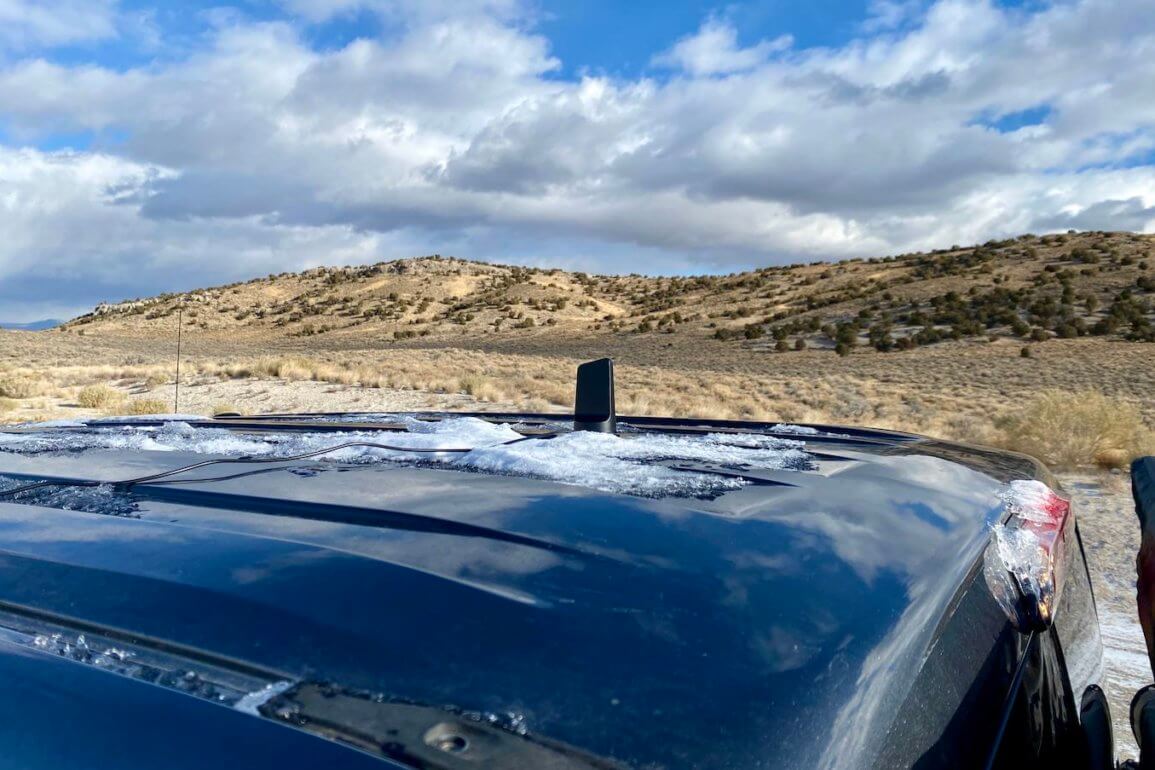The weBoost Drive Reach is an in-vehicle cell signal booster that amplifies weak cellular signals from distant towers. It lets you use your mobile phone for voice and data in remote areas.
To get us a closer look at the Drive Reach, weBoost, which is owned by Wilson Electronics, sent Man Makes Fire a review unit. After testing in remote areas of Idaho, including a road trip from Northern Idaho way down to the rugged high-desert mountains near Ely, Nevada, this is what we learned:
weBoost Drive Reach Review
The weBoost Drive Reach is legit. It boosts seemingly non-existent cell signals, and it works like magic. We’re big fans.
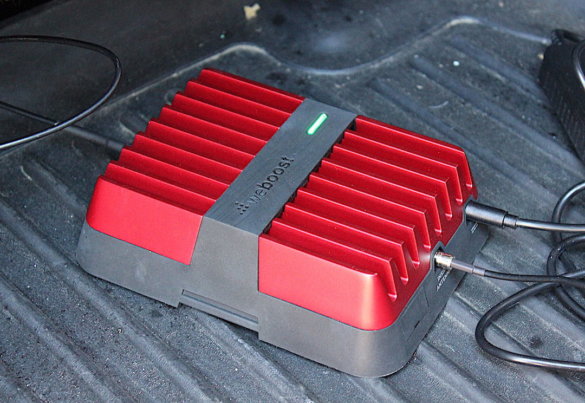
In fact, you can probably stop reading this review right now and just go buy one. It works. I was able to get usable 2-bar signals down along the Salmon River in Idaho. And this was in the middle of a deep canyon where no one I know has ever had cell service before. Not through Verizon or AT&T. I had service over much of the river. Amazing. In addition, I had service in an even more mountainous area farther from cell towers along a rugged part of the Payette River. I made a work call while sitting around waiting for road construction to let me through. So cool.
I was blown away. Instead of having service near a handful of small towns, I had service in between towns in long stretches that I thought were simply devoid of cellular signals.
Shop the Drive Reach at the Amazon weBoost Store and get FREE shipping!
Also Great in Remote Nevada and Utah
In the high desert plains of Nevada . . . and even up and around some remote mountain ranges, I was able to get a signal — and often strong signals that let me check email, browse the web, stream YouTube video, and even download a new audiobook for the long trip home.
I am seriously impressed with the weBoost Drive Reach.
Still, before you drop the coin on a weBoost Drive Reach, you probably want a bit more detail.
How the weBoost Drive Reach Works
The weBoost Drive Reach can amplify weak cellular service signals. It doesn’t work if there is simply no cellular signal available at all. Cell signals can be blocked by mountains and canyons, so sometimes you’re just not going to be able to get a signal at all. (To find out if there is a cell tower anywhere near where you plan to be, check out cellmapper.net.)
Similarly, if you’re too far away from a cellular service tower — even if line of sight is technically possible — the signal might be too weak or just dissipate out entirely before it reaches you.
On the other hand, the weBoost Drive Reach seemed capable of creating cell signals out of nothing. What do I mean?
If I turned off the weBoost Drive Reach, my iPhone 11 Pro Max would lose service. No signal. None. If I turned the Drive Reach on, boom, I’d often get two bars of usable service. I could get service in places where I never had cell service before.
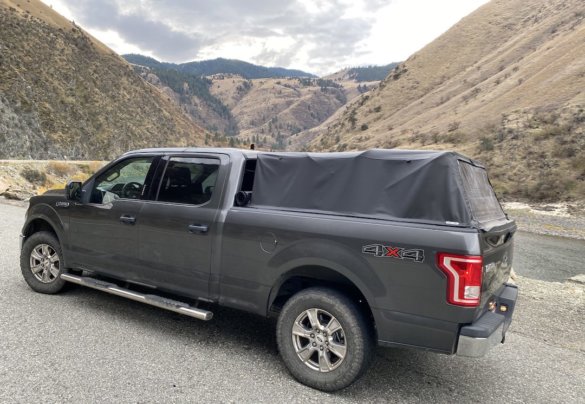
In my experience, the weBoost Drive Reach could frequently improve my service connection by two bars. In remote places, I could often get one bar and make a call. In other situations, I could go from two bars to four bars. Plus, based on previous data access usage along familiar routes, data access seemed faster.
Here is one example: In a 46-mile stretch between Grangeville, Idaho and Riggins, Idaho, I could previously get an AT&T signal a couple miles out of Grangeville and about 1 mile before Riggins. After installing the Drive Reach, I was able to get a usable signal over much of the road, as well as in spots 20+ miles from either tower deep in the middle of a 40-mile canyon along the Salmon River. This is rugged country.
There Is One Small ‘Gotcha’
There is one thing you need to know about the weBoost Drive Reach: It works better, sometimes remarkably better, when your phone is close to the in-car antenna.
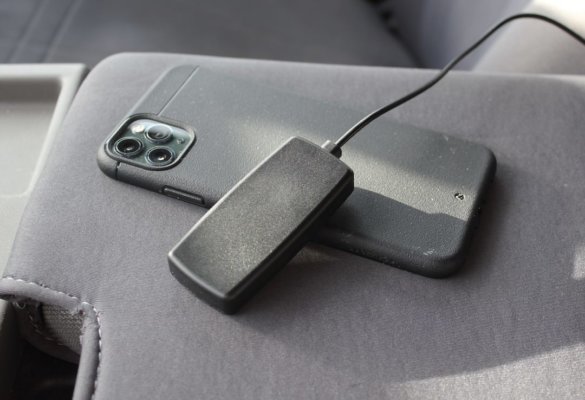
In most situations, just having the inside antenna anywhere inside of my pickup would result in at least a one-bar gain. But I also found some spots along rivers — which had cut deep canyons through mountains — where I could find a bar of service only by placing my iPhone right next to the inside antenna.
So, if you’re in an emergency situation or desperate for a hard-to-reach signal, hold the inside antenna next to your phone. It makes a difference — but why?
Wilson Electronics says that the effect is similar to what you typically find with home WiFi routers. As you get farther away from your WiFi router, the signal degrades. The same situation applies to the inside antenna for the weBoost Drive Reach, just on a much smaller scale.
I’m pretty sure Wilson Electronics could make the Drive Reach inside antenna more powerful — like the company’s in-home cellular signal boosters — but I’m also pretty sure it’s legally throttled by FCC regulations (just like consumer-grade two-way radios are).
How to Install the weBoost Drive Reach
Installation is astoundingly simple. Here’s how to install the weBoost Drive Reach:
- Use the magnetic base to place the external antenna on the roof of your vehicle.
Choose a spot at least 12″ away from the edges and/or a sunroof. If your vehicle has an aluminum body, use the included metal (magnetic) adhesive disk to create a spot for the magnetic antenna. - Route the external antenna cord through the weather seal on a rear door or hatchback.
- Place the weBoost base unit underneath a seat out of the way . . . or mount it with the built-in mounting bracket.
- Plug the external antenna into the base unit.
- Plug the inside antenna into the base unit and place the end in a central location in the vehicle.
Mount if desired with included adhesive patch. - Plug the power into the base unit, and then plug the 12v adapter into a standard socket.
That’s it! That’s all you have to do. When the unit is powered up with a green light, you’re good to go. Any nearby cell phone will be able to have its signal boosted by the weBoost Drive Reach.
And that’s worth saying again: If you’re on AT&T and your buddy is on Verizon, the weBoost will still work with both phones, simultaneously and automatically. The same goes for every other network and carrier, like Sprint, T-Mobile and smaller regional carriers.
Easily Moved to Another Vehicle
The weBoost Drive Reach is easy to move to another vehicle. The only real issue you might have is if your buddy’s vehicle has an aluminum roof — or doesn’t want you to place an adhesive metal disk on it. But that’s not a deal-breaker. It only means that you won’t be able to drive with the external antenna up on the roof. If there is an emergency situation — or you just want to check in on your phone — you can pull over and just set the antenna up on the roof.
In addition to boosting LTE and 4G signals, weBoost boosters will work on upcoming 5G signals, too.
Safety First
For many people, simply having increased cellular service and data access is a handy benefit. For outdoor enthusiasts, better cellular service could also be a critical safety investment. For many people in the wild and rugged western states in the U.S., help is, let’s face it, often a long ways away — even if a life flight helicopter could be called in.
The weBoost Drive Reach could make the difference in a dangerous situation. For that reason alone, we think the weBoost Drive Reach makes a great gift idea for outdoor lovers, and a great gift idea for hunters, for campers, and for fly fishers — all of whom are often out and about well beyond normal cell service range.
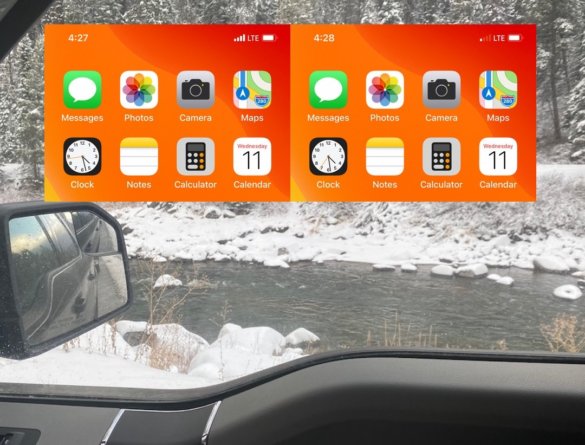
Other weBoost Models
The Drive Reach is weBoost’s latest in-vehicle booster for cars, SUVs, and pickups, and according to weBoost, it reaches cell towers up to 74% farther than the Drive X. In terms of cost, the Drive X cost about $100 less. If the boost difference is true — and I don’t doubt it based on my experience in connecting to distant and weak signals — it’s probably smarter for most people to choose the Drive Reach.
For cars, weBoost also offers the Drive Sleek. At just under $200, it delivers a great value proposition. I believe it’s best suited for travelers who have a few annoying dead-spots along their typical journeys.
Because there are so many variables in signals — weather, obstructions, devices — weBoost doesn’t market specific distances. However, the company notes that the Drive X reaches cell towers 33% farther than the weBoost Drive Sleek, and the Drive Reach reaches cell towers 74% farther than the Drive X.
For RVers, the Drive Reach RV is the most powerful unit from weBoost, but it comes with different cable lengths and mounting options for RV installations.
Alternatively, you could add a taller weBoost antenna accessory to squeak out a bit more range (but we don’t think most people will need to because the Drive Reach was so impressive on its own).
The Verdict: It’s Legit
The weBoost Drive Reach is weBoost’s most powerful cellular service booster that’s designed for cars, pickups and SUVs. The build quality and fit and finish are excellent. In fact, weBoost products are designed, assembled and tested in the USA — and it shows. After using and testing the weBoost Drive Reach during a multi-state rural road trip, I’m astounded at its ability to connect to cell towers and provide service in remote areas. If you want a mobile cellular service booster for increased range and safety purposes, the weBoost Drive Reach is an astounding tool. Very highly recommended.
Get the Gear:

